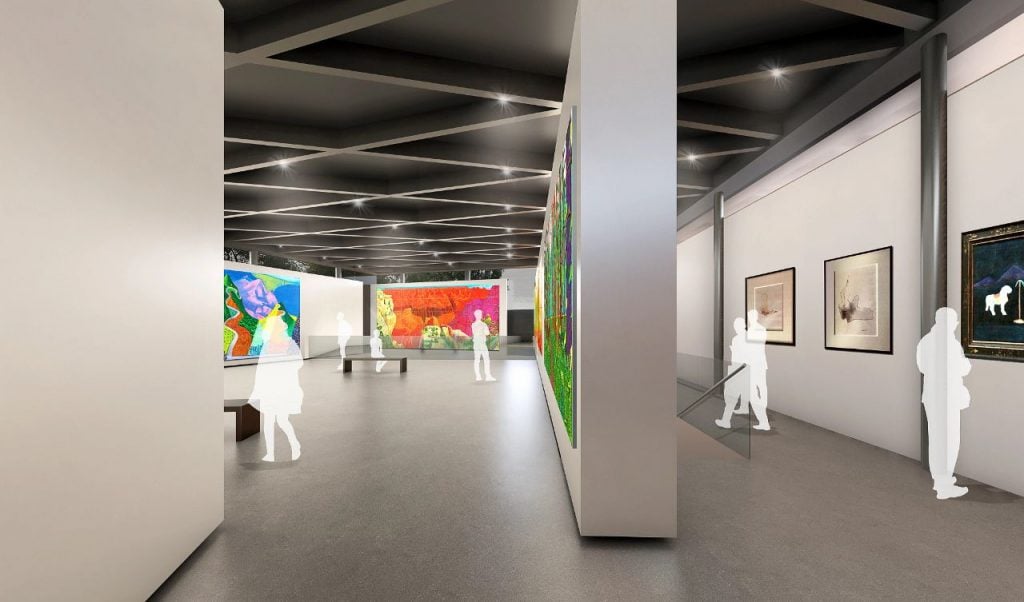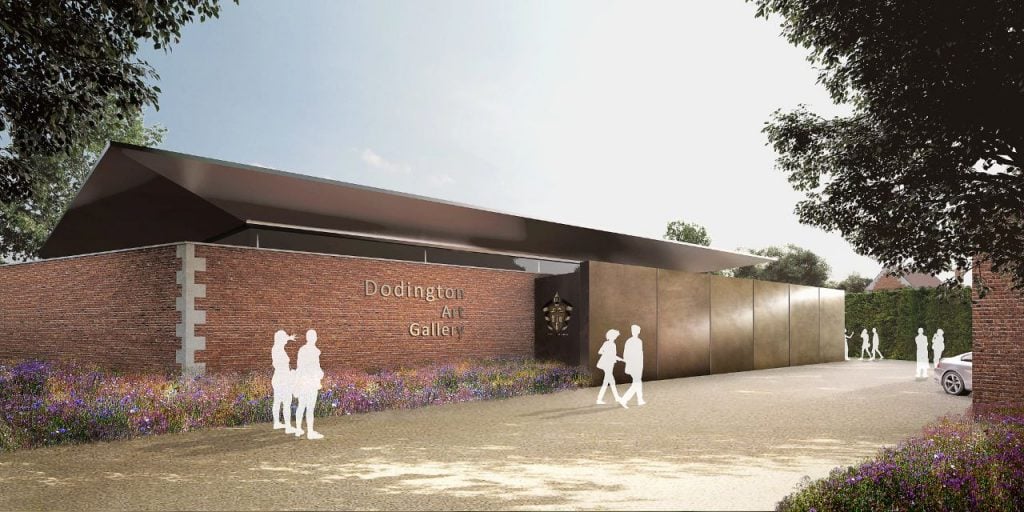Art World
The UK’s Richest Couple, Who Founded the Dyson Vacuum Cleaner Company, Are Opening a Museum for Their Private Collection
The Dodington Art Gallery will be the first major modern art gallery in Gloucestershire.

The Dodington Art Gallery will be the first major modern art gallery in Gloucestershire.

Naomi Rea

James and Deirdre Dyson, the founders of the British technology and vacuum-cleaner company Dyson, are building a new public art gallery for their private collection on their estate in Gloucestershire.
The couple have applied for planning permission for the gallery, which would be designed by the architect Chris Wilkinson and established in an area where there are few opportunities to enjoy modern and contemporary art.
Before becoming an industrial design magnate—and the UK’s richest person—James Dyson studied furniture and interior design at the Royal College of Art. Deirdre Dyson, who met James at school, is a professional artist and rug designer, and owns galleries in London and Paris.

Rendering of Dodington Park Art Gallery. Courtesy Wilkinson Eyre.
In a statement supporting their application to build the Dodington Art Gallery, as the space will be called, Tim Marlow, the chief executive and director of London’s Design Museum, called the Dyson collection “both compelling and important.”
The collection is made up mostly of modern artworks, paintings, and sculptures, and includes examples by Pablo Picasso, Yves Klein, and Op Art painter Victor Vasarely.
It is particularly strong in Pop Art, and includes Roy Lichtenstein’s 1963 Crying Girl and a late Andy Warhol print from the artist’s “Toy Series.”

Rendering of Dodington Park Art Gallery. Courtesy Wilkinson Eyre.
The Royal College of Art was an important progenitor of the British Pop Art movement in the 1960s, and British Pop is represented by two painted steel works by Allen Jones and Peter Blake’s 1999 Twins in the Tea Garden.
A particular highlight is David Hockney’s rarely exhibited Domestic Interior Scene, Broadchalke, Wiltshire (1963), which he made upon leaving the Royal College of Art. The picture, which depicts two male subjects in a domestic setting, helped establish the artist as radical figure in contemporary art. Several of Hockney’s Yorkshire landscapes are also included in the collection.
“Public interest in Hockney continues to grow but it’s fair to say that the major public holdings of his paintings are in London and the need for regional displays of Hockney is acute,” Marlow says.

Rendering of Dodington Park Art Gallery. Courtesy Wilkinson Eyre.
The gallery, which would be free of charge to visitors, is also set to include a sculpture garden, for which Deirdre Dyson will commission works. It will also include a tree-lined water feature designed by James Dyson.
“The Dodington Art Gallery has been carefully designed to create a discreet piece of architecture that fits comfortably into its particular context,” architect Chris Wilkinson says.